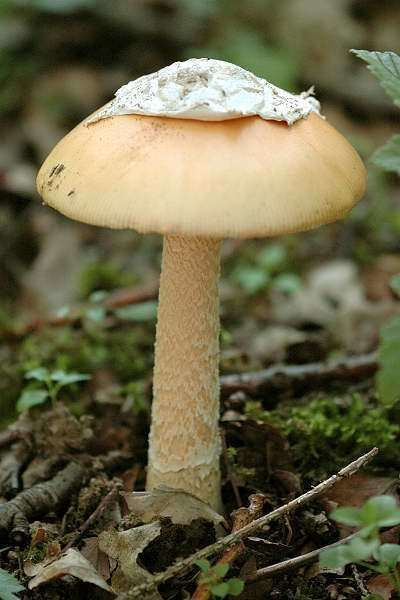Kingdom Fungi Class Agaricomycetes Rank Species | Division Basidiomycota Order Agaricales | |
 | ||
Similar Amanita sinicoflava, Amanita daucipes, Amanita rhopalopus, Amanita onusta, Amanita albocreata | ||
Amanita longipes is a small inedible mushroom species of the Amanita genus. It feeds on decaying leaves of some woods and can be found around the Appalachian Mountains. It is a food source for various insects.
Contents
Cap
The cap is typically around 24 - 102 mm (2.4 - 10.2 cm) wide, is hemispheric at first then becoming broadly convex to plano-convex, occasionally also slightly depressed in center; white, pallid grayish-brown or grayish buff over disk in age, surface dull and tacky at first and becoming shiny.
Gills
The gills are usually narrowlyadnate, sometimes with a decurrent line, close, whitish, becoming grayish-cream on drying, with white, floccose remnants of partial veil on edges, narrow, 4.5 - 11 mm (0.45 - 1.1 cm) broad, sometimes anastomosing; the short gills are truncate to rounded truncate to attenuate to attenuate in steps, plentiful, of diverse lengths, unevenly distributed.
Stem
The stem is 25 - 142 (2.5 - 14.2 cm) × 5 - 20 mm (0.5 - 2 cm), white, and tapers upward slightly to a flaring apex. The stem is decorated with easily removed, floccose material especially in upper portion; the flesh of the stem usually does not take on a color when bruised. The flesh is white, occasionally graying in damaged areas, with a firmly stuffed central cylinder, up to 7 mm wide. The ring is fibrous-floccose and rapidly evanescent. Volval remnants are absent from the bulb and the stem base or difficult to distinguish.
